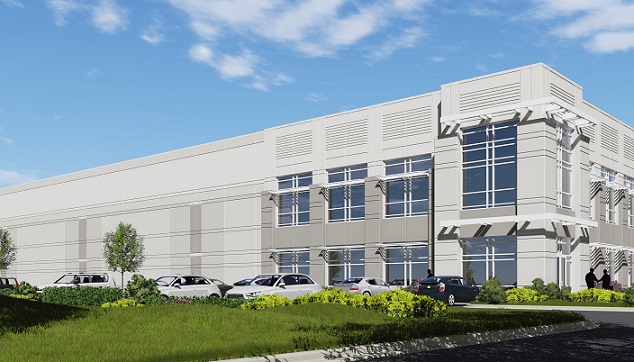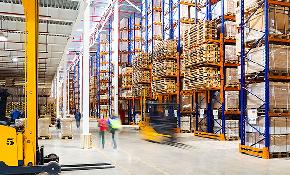 Amazon has decided to occupy this 746K spec building, developed by Hillwood, in Joliet.
Amazon has decided to occupy this 746K spec building, developed by Hillwood, in Joliet.
CHICAGO—The big box distribution buildings that since the recession have sprung up throughout much of the region form the heart of Chicago’s industrial market. And 2016 is shaping up to be a stupendous year in terms of leasing and new construction. This sector in the market has now seen 14 consecutive quarters of positive net absorption, according to a new report from Colliers International, and considering the level of demand, there does not seem to be an end in sight.
“This is the product where we are seeing the most activity,” Craig Hurvitz, vice president, Colliers, tells GlobeSt.com. That is part of the reason the company puts out a special report focused on big box properties, which Colliers defines as those with at least 300,000 square feet, 28’ clear ceilings or higher, and of precast construction. These also tend to be the newest, most valuable buildings and garner the most attention from institutional investors.
The vacancy rate in this sector of the industrial market was at 7.51% by the end of the second quarter, a decline of nearly 200 bps since last year. That vacancy rate has increased a bit in the past few months, company researchers found, but primarily because so much new construction has been hitting the market.
Leasing activity has been especially striking in the I-55 submarket. The vacancy rate for big boxes there dropped 276 bps in three months and stood at just 3.14% by the end of the second quarter, Colliers found, due to nearly two million square feet of leasing activity. “That’s the lowest it’s ever been,” says Hurvitz.
The O’Hare submarket has gotten even tighter than I-55. In the second quarter, the industrial distributor HD Supply took the only remaining big box vacancy, dropping the vacancy rate for more than 11% to zero, Colliers found.
And throughout the region, very few vacancies remain. Only 12 spaces between 300,000 and 500,000 square feet are available, for example, and just five between 500,000 and 750,000 square feet. And for tenants that need more than that, nothing is available.
In response, developers have accelerated construction deliveries, continuing a five-year trend. About 6.29 million square feet of new big box space was completed in the first half of the year, compared to 9.74 million square feet in all of 2015. Most striking, 3.28 million square feet of the space completed in 2016 was done on a speculative basis, about 52% of the total, and nearly equal the amount of speculative space completed in all of 2015.
“The demand and the need for e-commerce facilities is tremendous and growing every day,” Jack H. Rosenberg, the Chicago-based national director, logistics and transportation solutions for Colliers, tells GlobeSt.com. Amazon.com, for example, took two buildings during the quarter, totaling more than 1.4 million square feet, and one was a spec building. The company also plans to build another building in suburban Monee of about 855,000 square feet.
But it’s not just Amazon.com. Rosenberg points to the recent decision by Macy’s to close many of its stores as a sign of the times. The company will probably become one of the many retailers to accelerate its selling over the Internet. And although the last seven years of economic expansion has been somewhat slower than everyone could wish, “our business is doing record year after record year.”

















 Copyright © 2024 ALM Global, LLC. All Rights Reserved.
Copyright © 2024 ALM Global, LLC. All Rights Reserved.